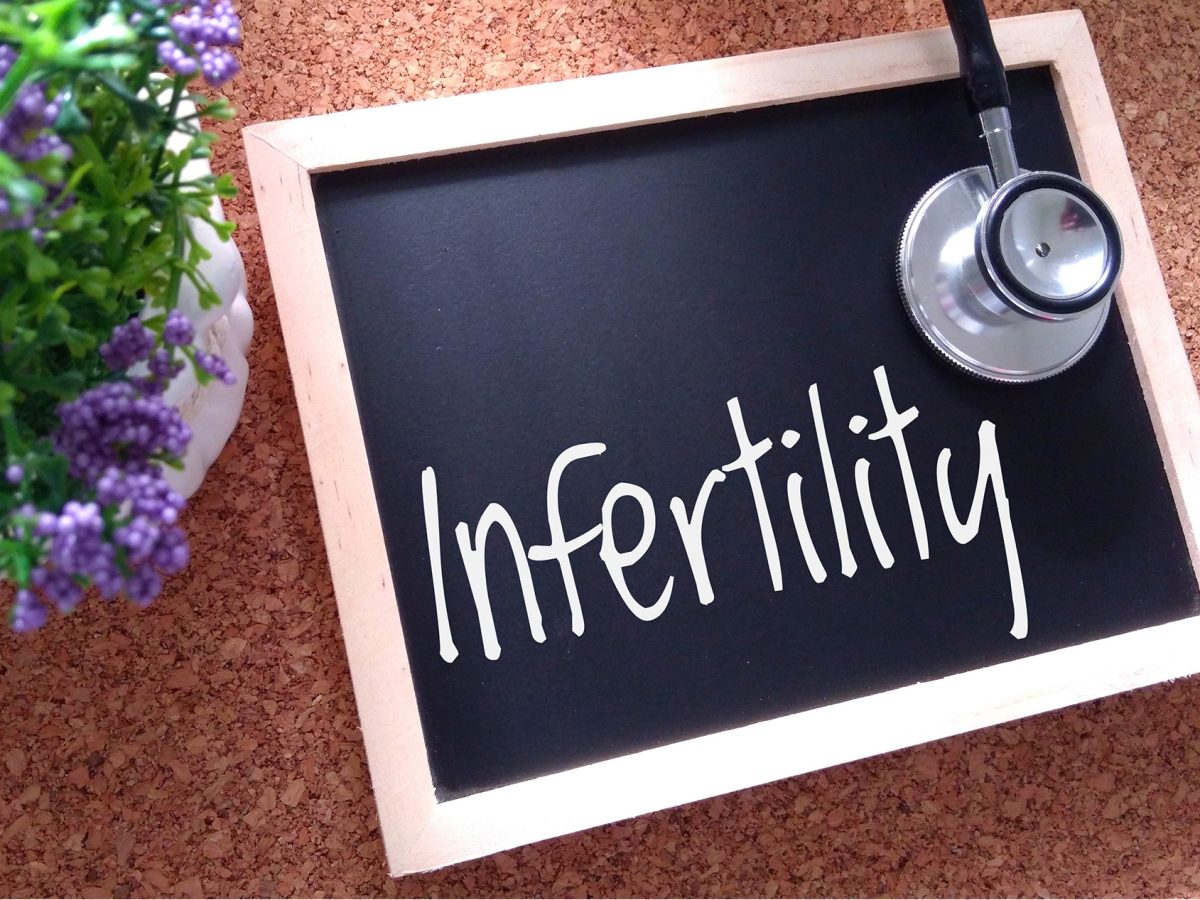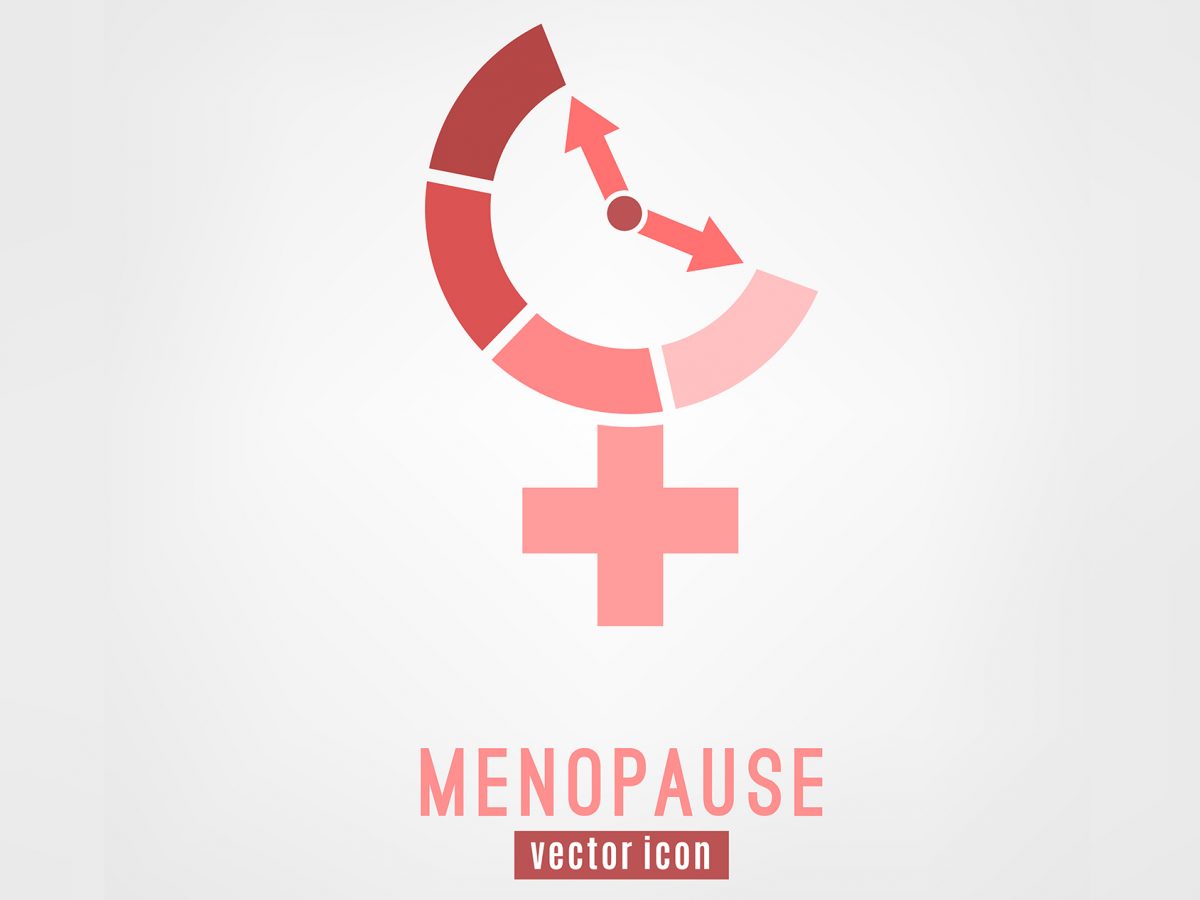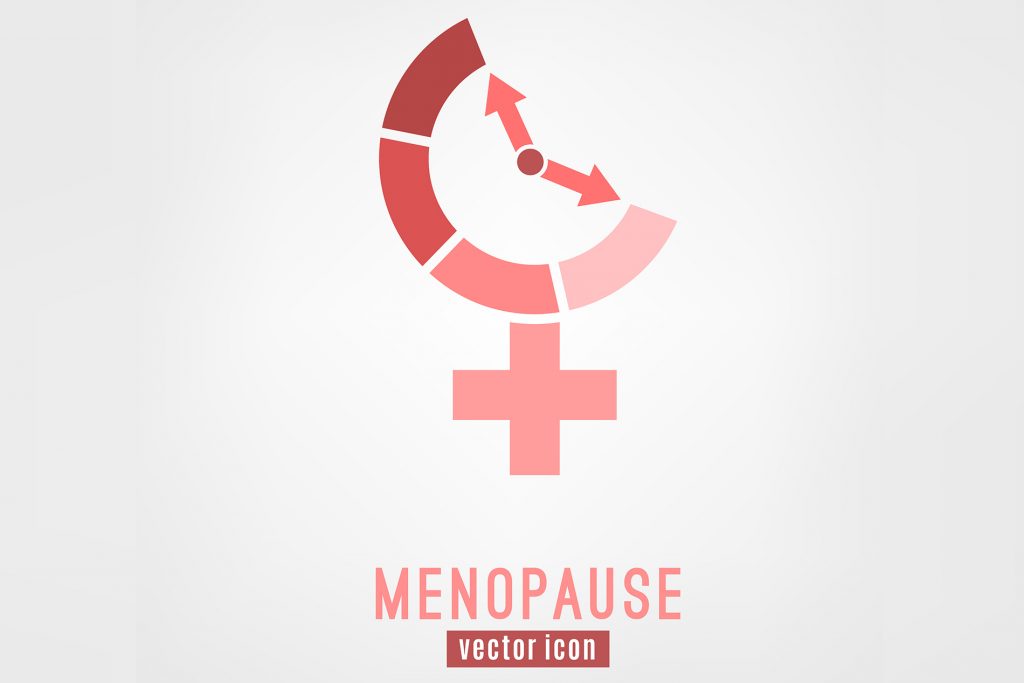A guide to managing infertility.
The desire to have a child is natural, and most women plan on experiencing pregnancy and childbirth at a certain point in their adult lives. Although conceiving a child may seem like the easiest thing in the world, it is actually not the case for many couples.
This explores the implications of infertility and treatment options- the effects it can have on you, your emotions, your sexuality and your relationships. It also outlines a number of ways in which you and your partner can cope with the problem of infertility.
Background on infertility.
Infertility is generally defined as the inability to conceive after one year of trying to become pregnant. Most couples assume that they are fertile and expect to conceive soon after they stop using birth control. However, 10% of all women of childbearing age are infertile, and about one quarter will experience at least one period of infertility sometime during their lives.
Causes of infertility.
Most couples that have difficulties achieving pregnancy are not sterile, but are usually infertile or subfertile (having a reduced chance of conceiving spontaneously in the normal way).
The most common known causes of infertility are spermatozoal defects, ovulatory disorders and tubal disease. But the biggest group is due to “unexplained infertility”. This is when a couple fails to conceive after 18 months of regular intercourse, and no cause is found.
Among couples who seek medical help, infertility is exclusively a problem in the female in about 40% of cases, and exclusively in the male in about 30% of cases. In the balance of cases, infertility results from problems in either partners or the cause of the infertility cannot be explained.
• The World Health Organisation believes that between 60 to 80 million couples in the world are infertile.
• Between 2 – 10% of couples are unable to conceive a child by natural means, and a further 10 – 25% are unable to have a second or subsequent child.
• It is estimated that about 1 in 6 couples seek help in trying to achieve a pregnancy. This help can range from basis advice from their doctor, to undergoing in vitro fertilization (IVF) therapy.
Treatments offers hope.
A diagnosis of infertility does not have to mean childlessness. It can often just mean that becoming pregnant is a challenge- one that can be aided significantly by medical treatment. Today’s treatments offer a good rate of success, and approximately three out of four women will get pregnant as a result of treatment.
Experiencing infertility.
To have your family is a universal dream, and the thought of not being able to can make you and your partner feel that something is wrong with you.
Learning that you have an infertility problem can lead to painful and difficult emotions. It involves rethinking many things you may have taken for granted: children and family life, genetic continuity, the experience of conception, pregnancy and birth, the meaning of your life plan and marriage, and your sexuality.
The following are examples of common feelings experienced by many couples dealing with infertility.
Confusion.
“I simply assumed I was fertile. I took birth control for years to avoid pregnancy, and it seems very ironic that I can’t conceive now. I don’t know why I can’t. I feel very confused about the whole situation, and it’s hard to make sense of it all.”
Frustration.
“I learned about my infertility only after trying to become pregnant for some time. Now my life seems on hold, and a lot of my time spent on medical appointments, tests, and treatments. Sometimes I feel frustrated and powerless.”
Fear.
“For me, going through infertility brought up a lot of fears and questions. How long would it last? What if I never became a pregnant? Why didn’t my body do the things I wanted it to do? I was afraid of my feelings, afraid of my body and afraid of the future.”
Isolation.
“I feel like I was the only woman I knew who was going through it. I stayed away from my friends because seeing their own children hurt me terribly. I felt very alone, like no one understood me.”
Guilt and shame.
“I couldn’t accept that it was a medical problem. I began to blame myself, and wondered why I was being punished. I couldn’t figure out what I’d done to deserve infertility. My self- esteem was at the rock bottom and I felt like a failure. I began to worry about what my family would think, and if my husband would stay with me if we couldn’t get pregnant.”
Anger.
“Everything makes me angry these days. My body, my partner, my family and friends. I get very upset when I hear about child neglect or abuse, because why should those people have children if they aren’t capable of loving them? I also get angry when I have to listen to well- intentioned advice. Hearing comments like ‘you’re not trying hard enough’ or ‘you should consider adoption’ just send me into a rage.”
Sadness and hopelessness.
“I feel like my future is hanging in the balance, and that I can’t hope for anything. I’m sad about the strain that infertility puts on my marriage and career. I’m very sad that I’ve had to put my life on hold while I try to get pregnant. I hate not having any definite answers or guarantees.”
Dealing with infertility as a couple.
Infertility can bring many changes to your relationship as a couple. It may bond your closer together, as mutual support and understanding leads to greater sharing and intimacy. But it can also bring forth feelings of guilt and resentment, particularly if no resolution is in sight. As a couple, you may have a lot of feelings in common when dealing with infertility, such as feeling out of control of your lives and your emotions.
Loss of control.
You and your partner have probably planned your lives to begin a family at the most favorable time. You may have practiced birth control for years and waited until your careers were established before trying to conceive. A diagnosis of infertility can remove the feelings of control over your life together.
Expressing feelings- the differences.
You and your partner are also affected by infertility in different ways, related to how men and women have been socialized to think, feel and act.
As a woman, you may feel responsible for much of the burden of infertility in a way that your husband may not. As a result, you can experience negative feelings, such as pain, anger, and fear, which can lead to anxiety and depression. These feelings are very common, and often the resulting friction can cause problems in your relationship.
As a man, you may often feel more threatened expressing yourself since you’ve often been taught to repress your emotions. You are trained to take charge, to make decisions, and to think without being emotional. You tend to focus your energy on your work, a place where you feel you can have more control. You may also feel overwhelmed by the intensity of your partner’s emotions, which makes it hard for you to offer support.
You may both feel that no one else understands what you are going through, and may isolate yourselves from potential sources of support such as friends and other family members.
A stronger relationship.
Infertility can test your relationship in a variety of ways, but providing mutual emotional support and working together can reduce some of the stress and help to avoid creating distance. It may even strengthen your relationship, as you both learn to give reassurance and encouragement, and realize that you can really depend on each other.
Sexuality.
Failure to conceive affects both self- esteem and self- worth. This negative is sometimes reflected in a couple’s sexuality, which can be compounded by it being seen as the “source” of the infertility problem. After all, most people see fertility as a logical consequence of a couple’s sexuality.
As time passes, you may find that sex loses its pleasurable aspects and feels like something of a chore. You and your partner may become aware of a loss of spontaneity, as medical procedure, temperature charts, and sex on a schedule can combine to take the joy out of your sex life. You may lose sight of each other and what brought you together as a couple.
These important feelings can effect your sex life, but it is important to remember that you can help each other through the difficult times. Share your feelings with each other. Remember that your life together as a couple is rich and varied, and is not defined solely by your ability to conceive.
Infertility and your relationship.
Infertility can have a significant impact on your relationship. It affects both partners physically, psychologically, socially and economically. Couples often report a wide range of emotions, including:
• Anger at infertility for taking over their lives.
• Anger at the inequity of infertility treatments. In most cases, women carry more of the burden than men do.
• Frustration over treatments that don’t guarantee a baby, after spending a great deal of time and emotional energy.
• Financial worries.
• A heightened sense of sensitivity and vulnerability.
• Frustration at the inability to make short- and long- term plans.
• Self- punishment – “perhaps I don’t deserve to have a child”
• Blame- “if only we’d done this or that, then we’d have a baby”.
• Desire to fight back and gain control of the process.
How your partner can help.
Your partner cares about you and how infertility is affecting your relationship. Your partner wants to help you in any way possible, and this section is intended to help both of you.
What you as a partner can do:
Infertility is a couple’s problem and is best approached as a team, through the commitment of both partners. Here are some ways in which you can support your partner during this difficult time.
Be a listener.
Ask them if they need to talk. Let them know that you are available for them. While listening, try to maintain an open mind and be supportive. Remind them that you love them no matter what. If they need additional support such as counseling, accompany them to appointments and attend counseling yourself if need be.
Be sensitive.
Don’t try to pretend that everything will be ok. Don’t trivialize their feelings, or give them empty reassurance.
Remember that working through infertility is a process that takes time. There are no guarantees, no package deals, no one right answer, and no quick choices. Your partner also needs patience as their feelings change. Don’t minimize or evaluate their feelings. Just allow these and give them time.
Stay informed.
This will help you maintain perspective about the array of choices you must make as a couple. The more information you have, the more knowledgeable decisions you can both make about your options.
Do things as a couple.
Enjoyable experiences such as a lunch date, a shopping trip or a visit to a museum, help you both feel there is a outside of infertility.
Remember that your willingness to listen and support can go a long way towards helping you both handle the stress you are experiencing. Infertility is probably one of the most difficult situations you will ever have to deal with.
Managing infertility:
What you need to know about infertility treatment.
Starting out.
If you suspect your problem with your infertility, the best thing you can do is to take immediate actions. The earlier a problem is identified, the sooner your physician can recommend the treatment program that is right for you. Responding to early concerns about infertility can increase your chances for a successful outcome.
When should I seek treatment for infertility?
Infertility starts as soon as you seek professional help. Many infertile couples undergo a long process to attempt to conceive with no guarantees of success. On the other hand, there are couples who become pregnant soon after their first appointment with the fertility specialist, without any treatment at all.
Should my partner accompany me to the specialist?
It takes two people to make a baby. Since both you and your partner are involved in the process, it is only fair that you both are part of it. The infertility specialist will be able to discuss with both of you and to also outline the chances of success and the possibility of failure.
What is the success rate of infertile couples getting pregnant with treatment?
Over half of the couples with more than two years of infertility eventually become successful in achieving pregnancy. With advances in infertility research and wider availability of newer techniques, the success rate of infertility treatment is increasing all the time.
Infertility treatments and procedures.
Over the past decade or so, improvements in techniques and procedures in reproductive medicine have increased the variety and availability of procedure to assist couples in achieving pregnancy. The treatment recommended for you will depend on your particular diagnosis and your decision on which direction your treatment will take.
Treatment may include timing of intercourse, hormone therapy, intrauterine insemination (IUI) to bypass problems with sperm/cervical mucous interactions, in vitro fertilization (IVF) with embryo transfer, gamete intra fallopian transfer (GIFT), or intracytoplasmic sperm injections (ICSI).
During the course of your evaluation, various testing procedures to determine male partner status, uterine/ovarian status, and tubal status will provide your doctor with information to recommend treatment options for you. Often your doctor will decide on a less invasive treatment plan at the first, such as timed intercourse or IUI. However, if the treatment does not result in pregnancy after several cycles, your doctor will likely recommend another treatment, such as IVF or ICSI.
Whatever the treatment plan, the ultimate decision remains with you, your partner and your doctor. Read on for more information about treatments and procedures to begin your education process.
Timed intercourse.
This is the most basic treatment for infertility. If testing determines that your tubes are clear, follicular development, endometrial development and semen analysis are normal, you can attempt pregnancy through timed intercourse. This procedure may include using a urine surge test kit to determine the time of ovulation upon which you and your partner will have intercourse at a given time. This is done to ensure that the sperm is in the fallopian tube at the time the egg is released and begins to travel down the tube.
A more advanced form of this treatment may include a monitoring ultrasound to determine follicular development and the development of the uterine lining. An injection of Human Chorionic Ganadotropin (HCG) can be given to induce ovulation and set up the timing for intercourse.
IntraUterine insemination (IUI).
This procedure also known as “artificial insemination”, involves placing washed sperm into the uterus with a small catheter through the cervix. Sperm can be form the partner or form frozen donor sperm, depending upon your needs. IUI is often performed if you have had failed attempts at timed intercourse or if there is a determination of abnormal cervical mucous/sperm interaction, poor mucous, or hostile mucous which renders the sperm unviable. In the latter case, sperm are injected past the cervical barrier to enable them to move into the fallopian tube and reach the egg.
Variations in the procedure include taking medications to produce multiple follicles and the release of more than one egg in order to achieve fertilization.
Advantages of IUI.
• Minimally invasive.
• Less emotional commitment.
• Less time- consuming.
Disadvantages of IUI.
• Fertilization cannot be confirmed.
• Risk of multiple pregnancies.
• Tubes must be unobstructed.
In vitro fertilization- embryo transfer (IVF).
IVF is probably the most common used of the Assisted Reproductive Technologies (ART). It is often known as the “test tube baby” procedure and has helped infertile couples conceive and bear children for well over two decades.
In order for a pregnancy to occur, an egg must be released from the ovary and unite with a sperm. This union, called fertilization, normally occurs within the fallopian tube. During the process of IVF, however, this union takes place in a laboratory after both eggs and sperm have been collected. The fertilised eggs are then transferred to the uterus to continue growth.
Down- regulation.
Medication is given which temporarily switches off the messages going from the brain to the ovaries telling them to produce an egg on a monthly basis. In additional, down regulations prevents premature release of the egg. Thus, down regulation primarily serves to ensure correct timing of ovulation prior to egg collection.
To ensure that the medication has worked, a blood sample is taken to check the level of oestradiol (one of the oestrogen hormones) and sometimes by performing an ultrasound scan of the ovaries and the womb (uterus).
Ovarian stimulation and follicular monitoring.
Gonadotropins (e.g. HMG – human menopausal Ganadotropin) are given to stimulate the ovaries into producing the follicles, which contain the eggs. HMG contains equal parts of FSH (follicle stimulating hormones) and LH (luteinizing hormone). Both hormones are natural parts of the follicle stimulating process. Treatment with HMG lasts 1 to 2 weeks and involves a once- daily subcutaneous injection.
Your doctor or nurse will teach you have to give the injections yourself. The length of treatment will depend on how your ovaries respond; ovary response will be monitored with the use of ultrasound and a blood test that measures your oestrogen levels. Once ultrasound shows that the lead follicle has matured in size, HCG will be injected to trigger the release of the egg.
Egg retrieval and embryo observation.
Thirty- six hours after the injection, retrieval of the eggs is undertaken. The procedure itself is formed at the hospital/ clinic most often by a transvaginal route. A needle, guided by ultrasound imaging, is inserted through the vaginal wall into the ovaries, where the follicles containing the eggs are punctured and the eggs withdrawn. The released eggs are transferred to the lab where their development stage is assessed. This procedure is usually done under a mild sedative or general anaesthetic. The procedure takes about 10-15 minutes, and you can return home a few hours after it. A sperm specimen is then washed and prepared for insemination. Each dish is placed in an incubator. The embryos are then observed for a few days for normal fertilization under a microscope.
Embryo transfer.
If fertilization is successful, the embryo can then be transferred to the uterus. The transfer techniques is accomplished by placing a maximum of 3 embryos inside a narrow plastic tube (transfer catheter) which is then inserted into the uterus through the cervix. The process lasts only a few minutes. You may then rest for a couple of hours, and return home where you often are advised to take it easy for 1 or 2 days.
Luteal phase support.
In some cases, supplemental Progestogen is occasionally used to improve the secretion of progesterone and estrogen during the luteal phase. It is administered in different to improve chances of implantation.
Pregnancy test and ultrasound.
A blood or urine pregnancy test will be taken. If the test is positive, an ultrasound examination will be arranged within the next two to four weeks. Once ultrasound confirms the presence of a healthy pregnancy, your doctor will discuss plans for pregnancy care with you.
Cases in which IVF may be recommended.
• Tubal disease.
• Endometriosis
• Cervical problems
• “Unexplained” infertility.
• Failure of IUI.
Advantages of IVF.
• Fertilization is confirmed.
Disadvantages of IVF.
• Technical demanding.
• Risk of multiple pregnancies.
• Price/costs.
The IVF- process at a glance.
There are several major steps to the in vitro fertilization (IVF) process.
All of these are done on an outpatient basis:
• Down regulation of the pituitary, depending on which IVF protocol is used.
• Stimulation and monitoring of the follicles.
• Collection of the eggs.
• Collection and preparation of the sperm sample.
• Incubation of the eggs and sperm together in the laboratory, to allow for fertilization and early embryo development.
• Transfer of the embryos into the uterus.
• A two- week wait for a pregnancy test.
Intracytoplasmic sperm injection (ICSI).
ICSI is a type of assisted microsurgical fertilization that involves the injection of a single sperm directly into an egg. Over the last few years, various methods of assisted microsurgical fertilization (micromanipulation procedures) have been developed for use when the male partner exhibits poor sperm motility and/or low sperm count. ICSI allows a much higher fertilization rate for these patients with “normal” fertilization in over 50% of eggs. Eggs for ICSI are obtained in exactly the same way as those for IVF.
Following egg retrieval, the cells surrounding each egg are carefully removed. The eggs are then examined under a microscope and only those that are judged as mature are suitable for injection. Typically, 70% of the eggs that are obtained are suitable for ICSI. The sperm are washed and prepared. The egg and the sperm are then placed on a special microscope that has micromanipulator holds the egg in place, while the other is used to inject the sperm into the egg. The remainder of the procedure is similar to standard IVF with regard to incubation of the eggs and transfer of the resulting embryos.
Cases in which ICSI may be recommended.
• Very low number of motile sperm with normal appearance.
• Problems with sperm binding to and penetrating the egg.
• Antisperm antibodies (immune or destroy sperm) of sufficient quantity to prevent fertilization.
• Prior fertilization failure with standard IVF culture and fertilization methods.
• Absence of sperm in the seminal fluid.
Advantages of ICSI.
• Most effective procedure for male infertility.
• Overcomes some sperm quality problems.
Disadvantages of ICSI.
• Possibility of transmitting infertility to offspring.
• Technically demanding.
• Price/costs.
Awaiting the outcome.
Fertility treatment can bring with it a certain degree of emotional strain. The process is emotionally and physically demanding, often seems outside your control, and has no guarantee of a successful outcome- all of which can increase your stress levels. While most couples cope well with the stresses of IVF procedure, all couples will feel the pressures to some extent.
Taking control.
There is no escaping the stress of infertility treatment, but there are ways in which you can manage or reduce the stress and regain a sense of control over your life. Try these strategies to help you cope with the demands of fertility treatment:
• Approach the infertility problem together with your partner as you would with any project. Your doctor can help both of you map out a strategy and a timetable.
• Collect information on the internet. There are many useful websites dealing with the subject of infertility.
• Try to keep the lines of communication open with your partner. This may not always be easy, but you need to support each other and communication is vital.
• Don’t be afraid to talk to others who have undergone fertility treatment. Their experiences will help you know you are not alone. Keep in mind, however, that everyone is unique and your situation is not exactly like anyone else’s.
• Don’t dwell on the short- term ups and downs of treatment. It is perfectly normal to feel frustrated and angry when things aren’t going you planned.
• Allow yourself to feel down when you have reached your limit. Remember that you are okay although you’re having trouble conceiving a baby.
• Consider taking time off from treatment if it becomes overwhelming.
• Make a date to have sex for fun during the “nonfertile” times of cycle. Try to bring back your original closeness.
• Try to redirect your focus toward something positive, such as a favourite hobby or new activity.
• Seek emotional support from a councilor or support group.
The result- before and after.
In particular, you can expect you and your partner’s stress levels to rise during the periods of waiting, for confirmation that fertilization has occurred and for a positive pregnancy test:
“You are sort of on a knife edge. You go into hospital and have the eggs taken out and then the sperm’s mixed and you feel you have to wait forever. You are so nervous and just hope for the best.”
“The hardest part of all has been the ups and downs. You go from the very heights to the bottom with just one phone call.”
For many couples, a negative result can mean intense disappointment: “When I had a negative test no one could have prepared me for how devastated I was going to feel. I just screamed and cried and was desperately upset, and I wasn’t prepared that I was going to be that upset.”
“It was worse with IVF, knowing that you’d had 3 embryos put back. It doesn’t hit you straight away. No one who hasn’t been through this can understand what if feels like. We’ve both lost people close to us, but this is a different type of grieving, you’ve got nothing to remember what you are grieving for and it’s devastating.
These experiences are in stark contrast to the elation felt by women who achieve pregnancy:
“I don’t think that until a few months ago it dawned on me that I’d actually got the healthy children that I wanted.”
“I can’t believe it still- after this length of time. I can’t believe that I’ve got a baby, and neither my husband.”
Stay positive.
Although going through treatment can be very hard on you, it is important to remember that there is always hope, and success may be achieved after considerable effort. Even in normal fertile couples, there is no guarantee of conceiving right away, it may take time and repeated efforts. Remember that a successful resolution may be just around the corner for you, too. This can make it all worthwhile.
Finding ways to cope.
Infertility is an experience that continually fluctuates in intensity, so that at different times you may have different needs and experience different emotions. You must find your own ways of coping with the situation, and the following section provides a range of ideas on how you can take care of yourself and your partner during this difficult time.
Realize that infertility is a life crisis.
Infertility may be one of the hardest situations you’ll ever face. It can call into question the most fundamental expectations you have for yourself, your body, and your relationship. It’s normal to feel a sense of loss, to feel stressed, depressed, or overwhelmed.
Educate yourself.
Read as much as you can and don’t be afraid to ask questions. This is particularly important when dealing with infertility because the technology is complex and changes so quickly. Talking with your doctor and understanding your options enables you to make informed choices.
Don’t blame yourself.
Negative thoughts only make things seem worse. When you start feeling like you “should have” or “could have,” try to remind yourself that infertility is not your fault. Concentrate on the present and the future, and how you and your partner are going to manage the current situation.
Maintain your emotional partnership.
Couples often feel like adversaries during this time. Do your best not to place blame, and instead try to help each other. This doesn’t mean you need to feel exactly the same way at the same time (most experts say couples are often out of sync), but it does mean sympathizing with your partner’s situation. If you’re taking care of each other emotionally, you can unite to fight the problem.
Decline invitations to baby- focused activities.
If certain gatherings or celebrations (such as christenings) are too painful, give yourself permission to avoid them. Your friends and family will understand.
Get support.
Society often fails to recognize the grief caused by infertility, which leads those struggling with infertility to hide their feelings. This only increases feelings of shame and isolation. Finding others who are going through the same thing can help you see that you are not alone and that your feelings are reasonable. Openly discussing your emotions can relieve tension, and can sometimes contribute to a higher pregnancy rate.
Consider counseling.
If you and your partner feel strained and isolated from one another, you may want to consider counseling. This has proven a very successful resource for many couples, and you may find it helps you share a new level of mutual respect and understanding. The ability to get through this together can open new doors to the future and deepen your relationship in a variety of ways.
Keep your perspective.
When it comes to fertility treatment, there are no guarantees. Trying to stay realistic can help you make smarter choices as you work your way through the emotional minefield of fertility treatment.
Pursue other interests.
Although you may feel like being treated for infertility ia a full- time job, it’s important to participate in some of the activities or hobbies that bring you pleasure. If you find that your old activities are painful- may be all your friends are parents now- look for a new diversion.
Setting limits, taking breaks.
Only you and your partner can decide your limits. Here are some questions you might want to ask yourself if you feel that treatment is too stressful, or if you may need to take a break from treatment:
• Do you feel that you are just going through the motions of treatment?
• Do you feel that you would have no regrets if you stopped treatment today?
• Have you and your partner drifted apart because of the infertility problem?
• Have you lost touch with yourself and your goals?
• Are you comfortable with other options available to you?
Often, taking a pause from fertility treatment can provide a release of tension and some needed perspective. Some couples even find that they achieve pregnancy at this point. Discuss it with your doctor, and consider whether taking a break is right is right for you.
Easing stress.
Here are some coping strategies that can help through this trying time.
• Read and learn as much as you can about infertility.
• Communicate fears and emotions to your partner on a regular basis.
• Support one another, but understand that at times it will be difficult to do this.
• Acknowledge the fact that periods of depression and anxiety may happen.
• Try to eliminate stressful activities.
• Allow yourself private time.
• Share your problems with supportive friends or other family members.
• Go to doctor appointments together so you both understand the tests and procedures.
• Write all of your questions down prior to your appointments so you don’t forget to ask your doctor to address each of your concerns.
• Take care of yourself by pursuing other interests.
• Discuss limits with your partner.







